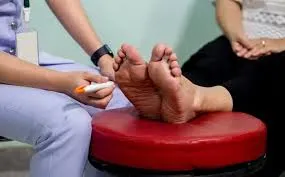
Foot pain and discomfort can significantly impact daily activities, making it difficult to walk, stand, or engage in physical exercise. Podiatrists specialize in diagnosing and treating a wide range of foot and ankle conditions, providing patients with relief and improved mobility. Several methods and therapies are commonly used to address foot-related issues, tailored to the needs of individual patients.
Managing Plantar Fasciitis
Plantar fasciitis is a condition characterized by pain in the heel and arch of the foot. This discomfort often stems from inflammation of the plantar fascia, a band of tissue connecting the heel bone to the toes. Podiatrists use a variety of approaches to manage this condition.
Initial treatment typically focuses on reducing inflammation. This can include the application of ice, modification of footwear to provide arch support, and the use of orthotic insoles. Stretching exercises targeting the calf muscles and plantar fascia are often recommended. These exercises improve flexibility and help alleviate tension in the affected area. For cases that do not respond to these options, some podiatrists may explore other treatments including corticosteroid injections, which target the root cause of the inflammation.
Addressing Bunions
Bunions develop when the joint at the base of the big toe becomes misaligned, often leading to swelling, redness, and pain. Podiatrists evaluate the severity of bunions to determine an appropriate course of treatment. Conservative treatment for mild to moderate bunions may include wearing shoes with a wider toe box to reduce pressure on the area, as well as the use of pads or cushions to prevent irritation. Custom orthotics can help to redistribute pressure and provide support for the foot structure. When discomfort persists or the bunion causes significant physical limitations, surgical intervention may be an option.
Treating Ingrown Toenails
Ingrown toenails occur when the edges of a toenail grow into the surrounding skin, causing pain and swelling. This can often result from:
- Improper nail trimming
- Tight footwear
- Injury to the toenail
Podiatrists typically address ingrown toenails by gently lifting the nail edges and placing a small piece of cotton or a splint underneath to encourage normal growth. More severe cases may require a minor outpatient procedure to remove part or all of the affected nail. This type of procedure aims to relieve discomfort and reduce the likelihood of recurrence.
Relieving Athlete’s Foot
Athlete’s foot is a common fungal infection that affects the skin of the feet. It often causes itching, redness, and scaling. Podiatrists begin treatment by evaluating the severity of the condition. This helps them determine the best course of action. For mild infections, topical antifungal creams, sprays, or powders are often used. In more persistent cases, oral antifungal medications may be recommended. Podiatrists also provide guidance on proper foot hygiene to help prevent future infections.
Podiatrists Support Long-Term Foot Health
Podiatrists play a key role in addressing foot conditions and helping patients regain mobility and comfort. Early evaluation and treatment by a podiatrist can significantly alleviate discomfort and reduce the progression of foot-related issues. For ongoing care and personalized recommendations, consulting with a podiatrist is a practical first step for those experiencing persistent foot pain or changes in foot health.